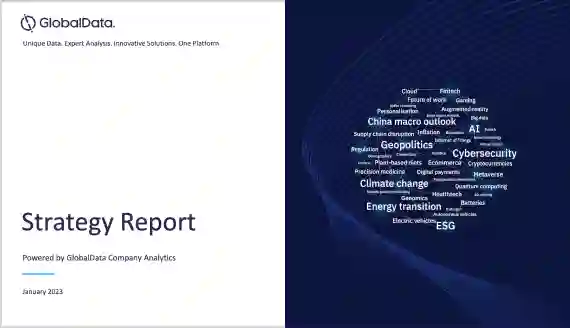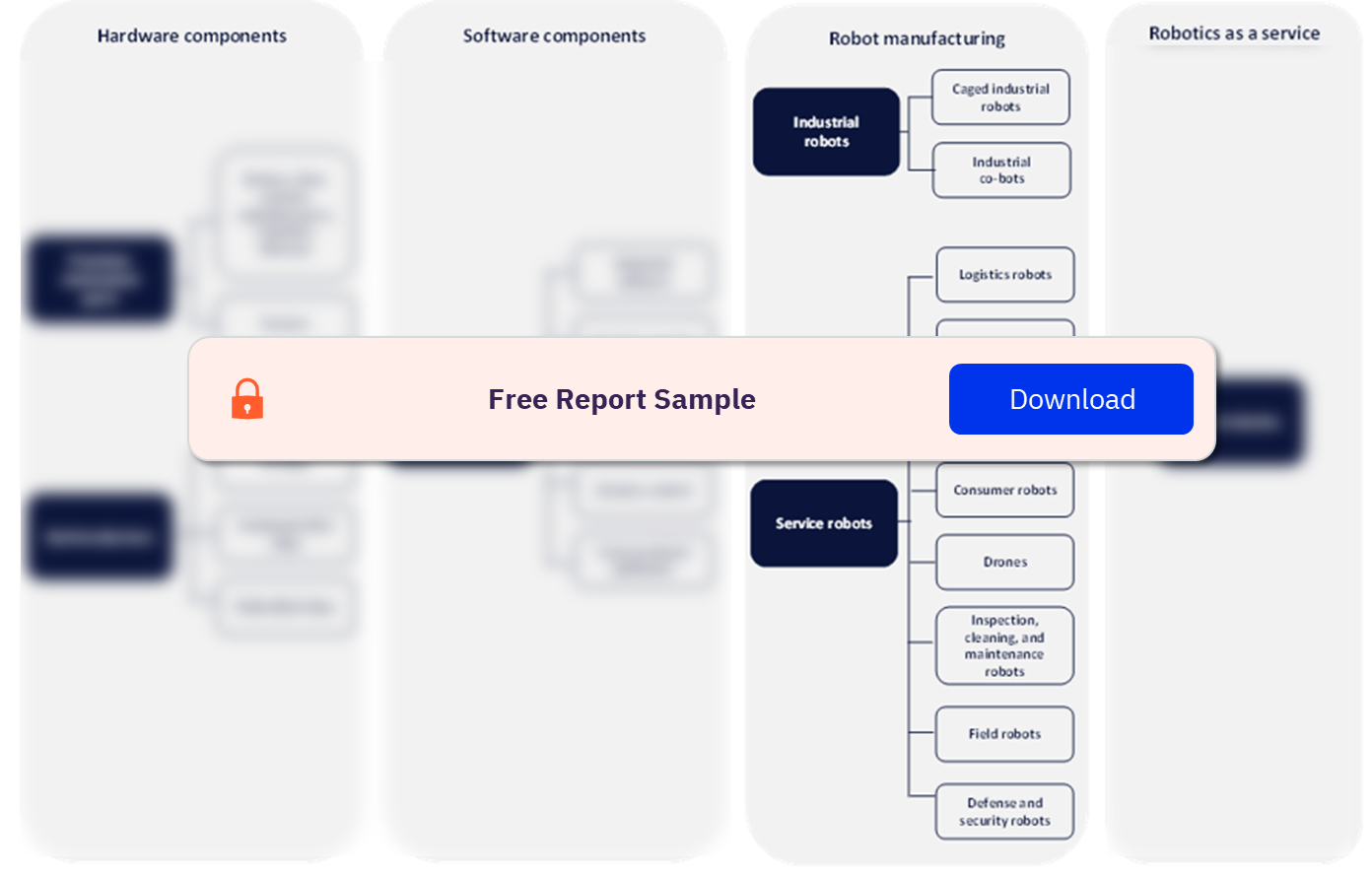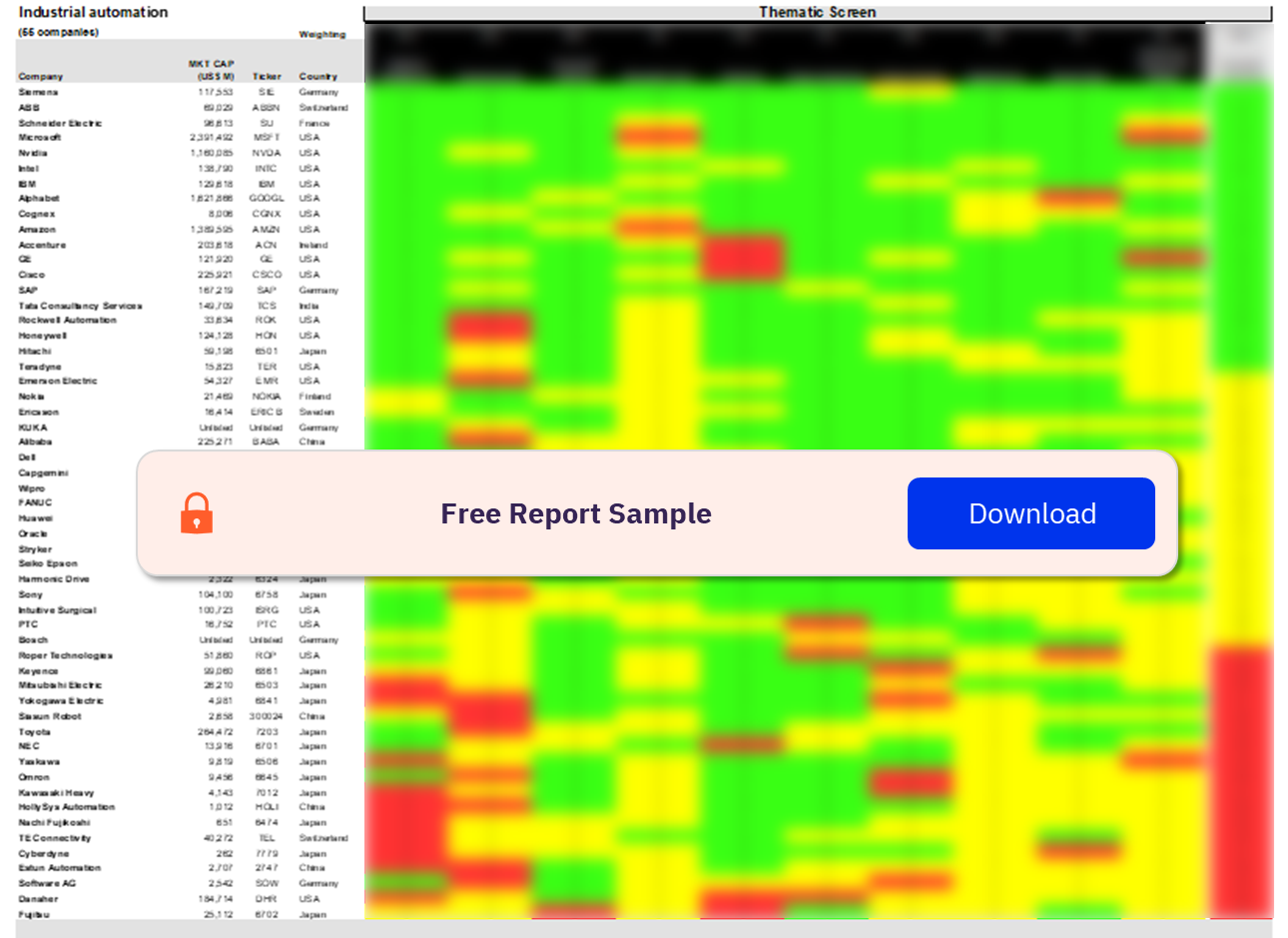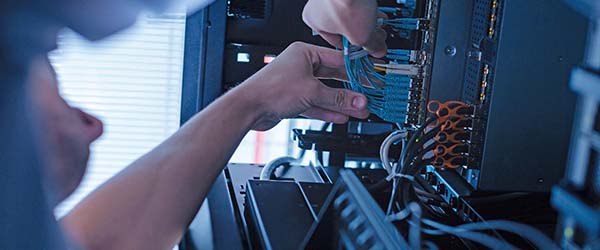Robotics – Thematic Intelligence
Powered by ![]()
All the vital news, analysis, and commentary curated by our industry experts.
Robotics Theme Analysis Report Overview
Robotics is an industry with a long history that is only now experiencing growth due to technological, economic, and demographic conditions prevalent in the industry. AI and cloud computing are unlocking the potential of robotics by enabling robots to collaborate and access huge amounts of data uninterruptedly. Societies are also using robots to care for older people and address shortages in the workforce. Automation is key to improving productivity across various sectors, including healthcare, manufacturing, and logistics.
The robotics thematic intelligence report provides an overview of the current landscape, including technology, macroeconomic, and regulatory trends, as well as key players. The report provides an industry-specific analysis based on GlobalData databases and surveys.
| Report Pages | 65 |
| Regions Covered | Global |
| Market Size (2022) | $62.7 Billion |
| CAGR (2022-2030) | >16% |
| Value Chain | · Hardware Components
· Robot Manufacturing · Software Components · Robotics as a Service |
| Leading Companies | · Cognex
· Cyberdyne · Estun Automation |
| Enquire & Decide | Discover the perfect solution for your business needs. Enquire now and let us help you make an informed decision before making a purchase. |
Robotics – Key Trends
The main trends shaping the robotics theme over the next 12 to 24 months are technology, macroeconomic, and regulatory trends.
- Technology trends: Some of the key technology trends impacting the theme are AI, edge computing, cybersecurity, industrial internet, cloud robotics, robotics centers of excellence (CoEs), and others.
- Macroeconomic trends: Some of the macroeconomic trends impacting the theme are China’s global economic and industrial impact, the robotics industry in Japan and Europe, and the Russia-Ukraine war.
- Regulatory trends: The usage of drones, China’s regulatory landscape, and ethical issues are the regulatory trends impacting the robotics theme.
Robotics – Industry Analysis
The robotics industry was worth $62.7 billion in 2022 and is expected to achieve a CAGR of more than 16% during 2022-2030. The robotics industry can be split into two main areas which are industrial robots and service robots. They can be further subdivided into additional categories, with service robots being a particularly fragmented category.
The Robotics industry analysis also covers:
- Timeline
Service and Industrial Robot Revenue 2020-2030 ($ Billion)
Buy Full Report for More Insights into the Robotics Revenue Forecast
Robotics - Value Chain Analysis
The robotics value chain consists of four segments: hardware components, software components, robot manufacturing, and robotics as a service. Depending on the application, level of sophistication, and reliability requirements, robotics generally involves several levels of control and processing, including onboard hardware and software and, increasingly, cloud processing and the pooling of knowledge from multiple robots.
Robot manufacturing: Robot manufacturing can be further divided into industrial robots and service robots. Industrial robots are typically housed in safety cages as they lack sensory intelligence, making them too dangerous to be placed near workers for fear of injury. China is the key growth driver for the industrial robot sector due to the accelerating automation in the Chinese manufacturing sector and the retooling of its automotive factories. Growth in the market is also driven by increasing demand for automation in industries other than automotive.
Robotics Value Chain Analysis
Buy Full Report for More Insights into the Robotics Value Chain
Robotics – Competitive Analysis
Some of the leading companies making their mark within the robotics theme are:
- Cognex
- Cyberdyne
- Estun Automation
Buy the Full Report to Learn More About the Leading Robotics Companies
Industrial Automation Sector Scorecard
At GlobalData, we use a scorecard approach to predict tomorrow’s leading companies within each sector. Our sector scorecard has three screens: a thematic screen, a valuation screen, and a risk screen.
- The thematic screen ranks companies based on overall leadership in the 10 themes that matter most to their industry, generating a leading indicator of future performance.
- The valuation screen ranks our universe of companies within a sector based on selected valuation metrics.
- The risk screen ranks companies within a particular sector based on overall investment risk.
Industrial Automation Sector Scorecard – Thematic Screen
Buy Full Report to Know More About the Sector Scorecards
The Robotics sector scorecard also covers:
- Consumer electronics sector scorecard
Scope
This report provides:
- An overview of the robotics theme.
- The key trends impacting the growth of the theme over the next 12 to 24 months are split into three categories: technology trends, macroeconomic trends, and regulatory trends.
- Comprehensive industry analysis, including forecasts for robotics revenues to 2030. These forecasts are split by robot type (industrial and service).
- Details of M&A deals driven by the robotics theme, and a timeline highlighting milestones in the development of robotics.
- Detailed value chain comprising four core segments: hardware components, software components, robot manufacturing, and robotics as a service. Leading and challenging vendors are identified for sub-categories across all four segments.
Key Highlights
Science fiction often speculates about robots that are virtually indistinguishable from humans. Yet, the most popular consumer robot is still a vacuum cleaner shaped like a disc. In factories and warehouses, human staff work alongside robots that are incredibly good at performing repetitive and dangerous tasks but do not look or behave like humans. In the future, AI will allow robots to identify human emotions, and the field of soft robotics is developing robots from materials similar to those found in living organisms. There is a chance that one day life will imitate art, and robots will look like people. If and when that happens, societies will face an ethical conundrum: what rights do we give non-human creatures that look like us?
Reasons to Buy
Robotics has a long history, but only relatively recently have conditions aligned to unlock its full potential. This report provides a clear and comprehensive overview of the robotics theme and explains the conditions driving its growth. It also includes details of leading vendors across all aspects of the robotics market, from caged industrial robots and industrial co-bots to consumer robots and drones.
6 River Systems
ABB
Aeronvironment
Aethon
Agrobot
Air Hogs
Airbus
AIST
Alibaba
Alphabet
Amazon
Ambarella
AMD
American Robotics
AMS
Anduril
ANYbotics
Apple
Arxium
Aselsan
AUBO Robotics
Autel Robotics
AVIC
Avidbots
BAE Systems
Baidu
Baker Hughes (Waygate)
Barrett Technology
Baykar
Bear Robotics
BigML
Bionik Laboratories
Blue Frog Robotics
Boeing
Broadcom
C2RO
Cambricon
CASC
Cerebras
Cisco
Clearpath
Cognex
Coherent Corp
Corin Group
Cyberdyne
Daihen
Delair
Denso
Diligent Robotics
DJI
Dyson
EcoRobotix
Ecovacs
Ehang
Ekso Bionics
Elbit Systems
Electrolux
Emax
Embodied
Estun Automation
ExRobotics
FANUC
Festo
First Sensor
Five Elements Robotics
Flyability
Flytrex
Focal Medtech
Franka Emika
Freefly
Fujitsu
GE
GE Digital
Gecko Robotics
General Atomics
General Dynamics
Genrobotic
GestureTek
Globus Medical
Graphcore
Grey Orange
GSK CNC
Hahn Group (Rethink Robotics)
Haier
Halo
Harmonic Drive
Hasbro
Hindustan Aeronautics
Hitachi
HollySys
Hon Hai (Foxconn)
Honda Robotics
Honeywell
Horizon Robotics
Huawei (HiSilicon)
Hubsan
Huntington Ingalls
Hyundai Motor
IAI
IAM Robotics
IBM
iFlytek
Indie Semiconductor
Infineon
Intel
Intuition Robotics
Intuitive Surgical
InVia Robotics
iRobot
Jabil Circuit
John Deere
Johnson & Johnson
Kawasaki
Keyence
KOKS
Kompaï Robotics
Kongsberg Maritime
Kore.ai
Korea Aerospace Ind.
Kratos Defense
Krauss-Maffei Wegmann
Lego
LG Electronics
Lockheed Martin
Locus Robotics
Marvell
Maxon
MediaTek
Medtronic
Microchip
Microport MedBot
Microsoft
Midea (Kuka)
Milrem Robotics
Mitsubishi Motors
Myomo
Nabtesco
Nachi-Fukikoshi
Naval Group
Neurala
Nexter
Nippon Ceramic
Noos
Northrop Grumman
Nvidia
NXP
Omnicell
Omron
Ottobock
Ouster
Parker Hannifin
Parrot
PickNik Robotics
PredicSis
Procept Biorobotics
Q-BOT
Qinetiq
Qorvo
Qualcomm
Quanergy
Rabbit Tractors
Rapyuta
Raytheon Technologies
RDA Microelectronics
Revolve Robotics
ReWalk Robotics
Rheinmetall
Robert Bosch
Robotiq
Rockwell Automation
Rokid
Rokoko
Rowbot
Saab
Samsung Electronics
SAP
Schneider Electric
Seegrid
Seiko Epson
Sensata
Sentient Tech
SharkNinja
Siasun Robotics
Siemens Healthineers
Skydio
Skyworks
Small Robot Company
Soft Robotics
Softbank
Sony
Spin Master
Stellantis (Comau)
Stihl
STMicroelectronics
Stryker
SuitX
TDK
TE Connectivity
Teledyne Technologies
Tend.AI
Teradyne (Universal Robots)
Texas Instruments
Textron
Thales
Tharsus
Toyota
Trimble
TSMC
Turkish Aerospace Ind.
UBtech
Ultraleap
UNISOC
Uvify
Vecna
Venus Concept
Vicarious Surgical
Walkera
Wingcopter
Xiaomi
Yaskawa
Yuneec
Zimmer Biomet
Zipline
Zora Robotics
Table of Contents
Frequently asked questions
-
What was the size of the robotics market in 2022?
The robotics market was worth $62.7 billion in 2022.
-
What is the growth rate of the robotics market?
The robotics market is expected to achieve a CAGR of more than 16% during 2022-2030.
-
What are the components of the robotics value chain?
The robotics value chain consists of four segments which are hardware components, software components, robot manufacturing, and robotics as a service.
-
Who are the leading companies in the robotics industry?
Some of the leading companies in the robotics industry are Cognex, Cyberdyne, and Estun Automation.
Get in touch to find out about multi-purchase discounts
reportstore@globaldata.com
Tel +44 20 7947 2745
Every customer’s requirement is unique. With over 220,000 construction projects tracked, we can create a tailored dataset for you based on the types of projects you are looking for. Please get in touch with your specific requirements and we can send you a quote.














